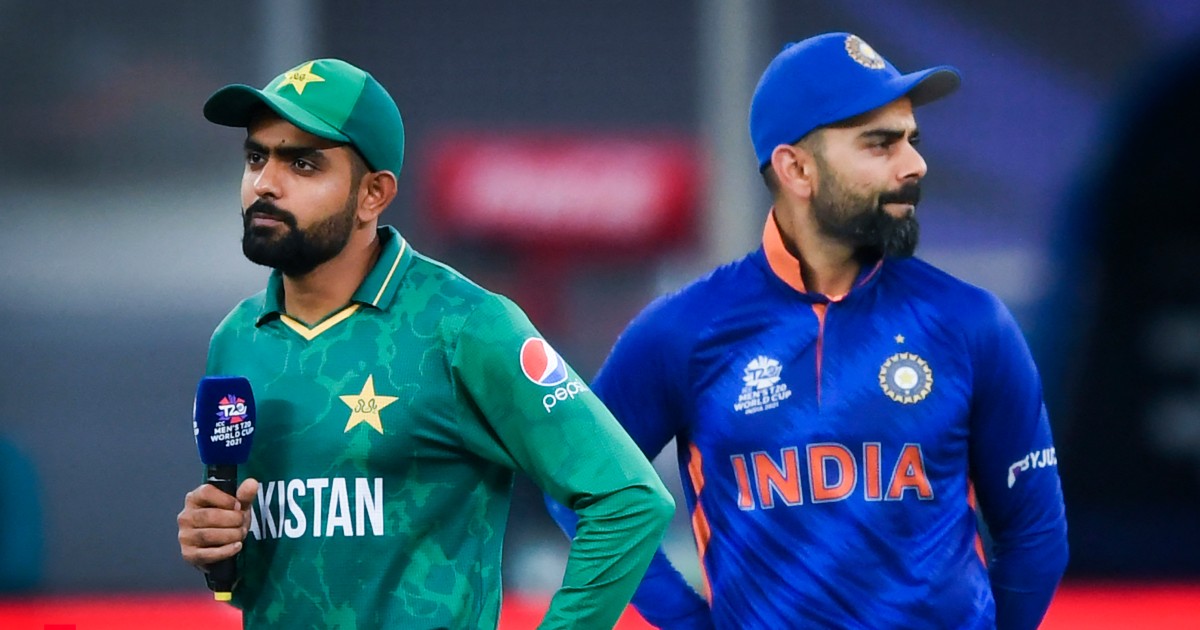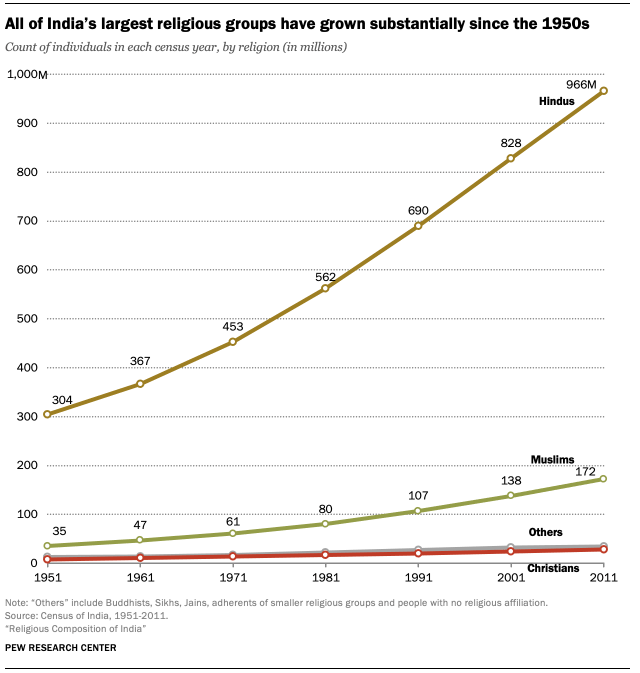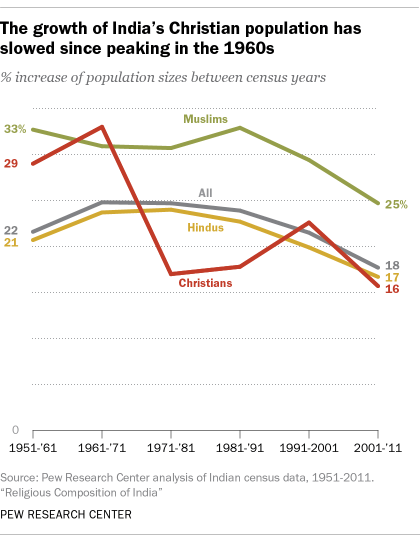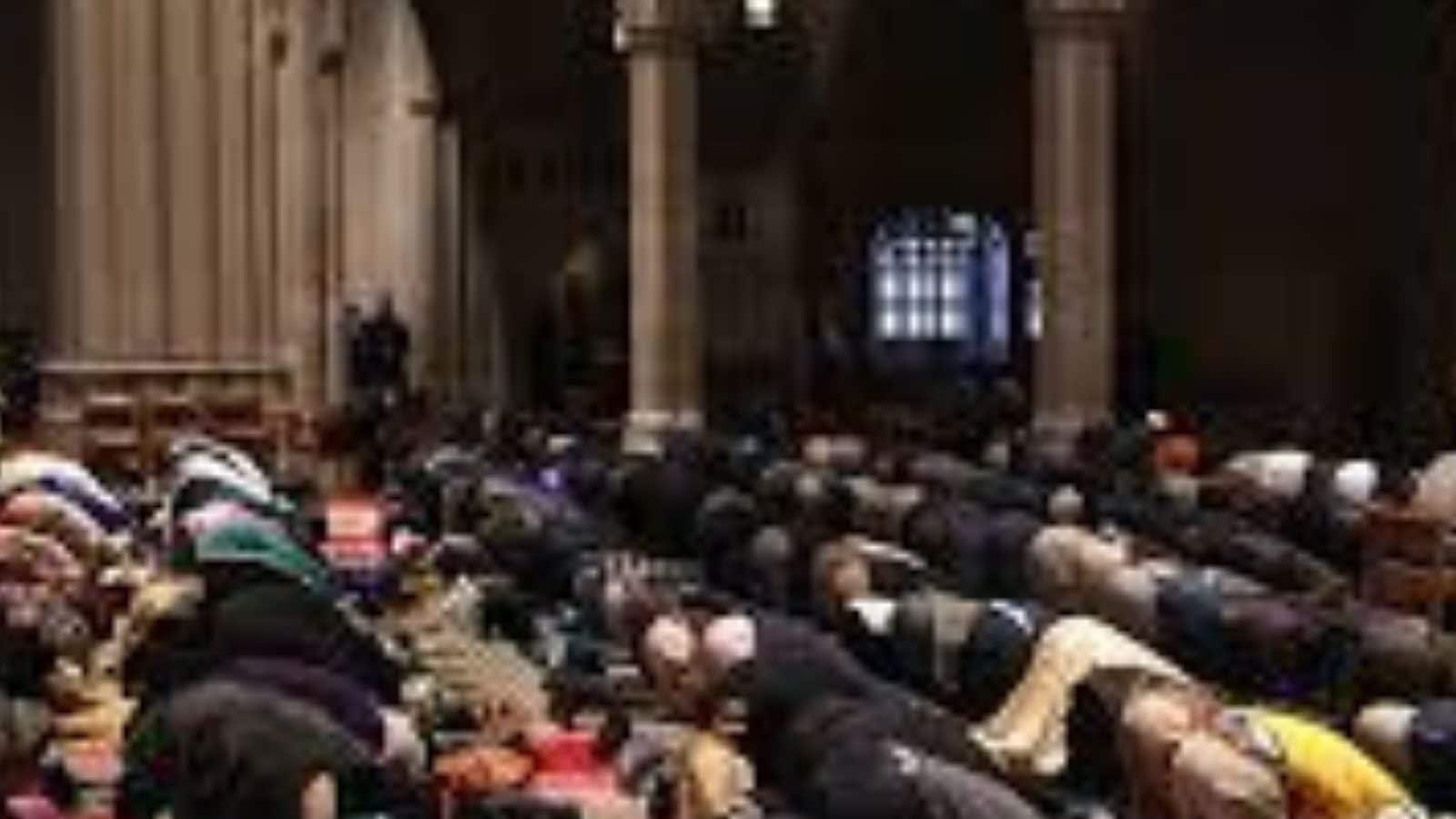Is India Becoming Less Tolerant?
Venkatachala I Sreenivas
India, reputed for its toleration, recently is reported as becoming less tolerant. India being a pluralistic society of many languages, customs, and religions, question arises as to who is becoming intolerant of whom and for what reasons. It is reported that the Hindu majority is becoming intolerant of Muslim and Christian minority. There are followers of other religions whose number is much smaller than that of Muslims and Christians. Zoroastrians constitute 0.6%; Buddhists 0.71%; Jains 1.0%; Sikhs 2%; Christians 2.5% and Muslims 12% of the population. Hindu India gave shelter to the religiously persecuted Jews and Zoroastrians for over thousands of years and they have coexisted peacefully without discrimination enjoying all the benefits of Indian citizenship. Then why Muslims and Christians allege discrimination needs careful scrutiny.
Article 29 of the Indian constitution states: Any section of the citizen residing in the territory of India or any part thereof having a distinct language, script or culture of its own shall have the right to conserve the same. Article 30 upholds the right of minority communities to establish and administer educational institutions of their choice. Article 51A concerning the duties states (a) to abide by the constitution and respect its ideals and institutions, the national flag and national anthem; (f) to value and preserve the rich heritage of our composite culture.
Minority community members have made their mark in politics, business, judiciary, military etc. There are Christian educational institutions, churches, and mosques spread all over the land. While Christians and Muslims have enjoyed the benefits guaranteed by the Constitution, they have fallen short of fulfilling the obligations under article 51A (a) and (f) for promoting harmonious living resulting from their world view of their respective religions.
The Hindu view that the goal [Human salvation or God realization] is one but the paths are many avoids fanatism and promotes freedom of thought and choice. Hindus have coexisted peacefully with other mutually accepting religions. Hinduism has never declared that there is only one correct way to reach the goal. In contrast, for both Islam and Christianity there is only one way, their way and it is their duty, sanctioned by their respective scriptures, to convert the nonbelievers. In a secular country like India, citizens are required to leave their religious beliefs at their home when entering public sphere. Unfortunately, Indian Muslims and Christians not able to or willing to follow this principle and by bringing their religion into public sphere find themselves in inevitable conflict with others violating Article 51A (a) and (f) of Indian constitution.
Hindu view is inclusive. Hinduism teaches that the whole of humanity is one family. Muslims and Christians, in contrast, have divided the world into ‘us’ versus ‘other’. Islam and Christianity by exclusivity has been responsible for genocide, exploitation, slavery, destruction of cultures, civilizations, religions of the ‘other’. Christian ‘pioneers’ in the Americas, Australia and in New Zealand nearly decimated native population destroying their culture and religion. African natives were traded as slaves and treated worse than animals.
The account of Alau-d-din reported by Will Durant, an eminent historian, “Mohamedan rulers collected half of the gross produce of the soil produced by Hindus; native rules had taken one sixth. No Hindu could hold up his head and in their houses no sign of gold or silver was to be seen. Blows, confinement, imprisonment and chains were all employed to enforce payment in addition to intimidation by mass slaughter.” Hindus had to endure ‘jazia’ a tax to be paid for being a Hindu— a coercive measure to convert to Islam. Muslim aversion for coexistence with Hindus resulted in partition of the Indian subcontinent to secular India and Islamic Republic of Pakistan with detrimental consequences. While Muslim population in India is increasing the Hindu population of Pakistan has decreased from 23% to 2% reflecting the plight of ‘others’ in a Muslim country.
Lured by India’s fabulous wealth European Christians came to India as traders and when they became colonizers. They impoverished India by transferring money they collected as taxes, the wealth they plundered and the sumptuous salaries they enjoyed to Britain. John Bright wrote: “The single city of Manchester, in the supply of its inhabitants with the single article of water, has spent a larger sum of money than the East India Company has spent in fourteen years from 1834 to 1848 in public works of every kind throughout the vast domain.” Sir Cotton in 1854 wrote, “Public works have been almost neglected throughout India…The motto hitherto has been: Do nothing, have nothing done, let no body do anything.’ Even in 1936, less than three per cent was spent on agriculture. In addition, the missionaries colluding with the government started harvesting ‘ pagan souls’ for Christianity. The missionaries hated Brahmins who were an obstacle in their proselytizing activity. They maligned Hinduism in general and Brahmins in particular. Historian Basham wrote: “Some of the nineteenth century missionaries armed with passages from Hindu and Buddhist scriptures, often taken out of context, and with tales of famine, disease, and evils of Hindu caste and family system have helped to propagate the wide spread fallacy that India is a land of gloom. Demonizing Hinduism served a useful purpose for raising fund in their native countries for the ‘noble purpose’ of salvaging the pagan, idol worshipping Hindus.” This narrative has continued.
Arabia, Egypt, and Persia overrun by Islam lost their culture, civilization and religion. Native Americans, Australians, and Africans suffered similar fate under Christianity. To the credit of Hindus they preserved their religion and culture despite centuries of onslaught by Islam and Christianity. Dubois, no lover of Hinduism, wrote: “Hindus have often passed beneath the yoke of foreign invaders whose religions, laws, and customs have been very different from their own. Yet all efforts to impose foreign institutions on the people of India have been futile, and foreign occupation has never dealt more than a feeble blow against Indian custom. Above all, and before all it was the caste system that protected them”. It is noteworthy that this was accomplished over a vast area extending from the Himalayas to Kanyakumari without having a central church or a body of men to designate the doctrines to be followed by everyone.
The current events are nothing but a continued struggle and a reaction of non-proselytizing Hindus to retain their culture, civilization and religion against the continued onslaught of Islam and Christian proselytization by coercion, allurement of monetary benefits, misinformation, or blackmail of the vulnerable sections of the society to bring about demographic changes. To avoid fraudulent practices several states have enacted laws against such conversions applicable to all religions. Paradoxically the majority Hindu community is at a disadvantage compared to minority communities. For instance, majority of the Hindu temples are controlled by government and the revenue generated by them is utilized for general purposes at the expense of Hindu community. But churches and mosques are not under government control and are free to use their revenue for the benefit of their respective communities. Paradoxically it is the majority community which is demanding an end to discriminatory practices and the government to become truly secular. Another such demand is about enactment of uniform civil code.
The concept that one religion at the exclusion of all others will ensure peace and prosperity is fallacious. The two World Wars were started by Christian Nations. There is economic discrepancy among Muslim countries and not all Christian nations are equally prosperous. Hindus have demonstrated over ages the benefit of mutual acceptance and harmonious living; Christianity and Islam the harm resulting from diving the world into ‘us’ versus ‘Others’. There is no Hindu intolerance but only Hindu attempt at self-preservation. Plurality which is dear to Hindu culture deserves emulation and support and not vilification.
…………….O…………









